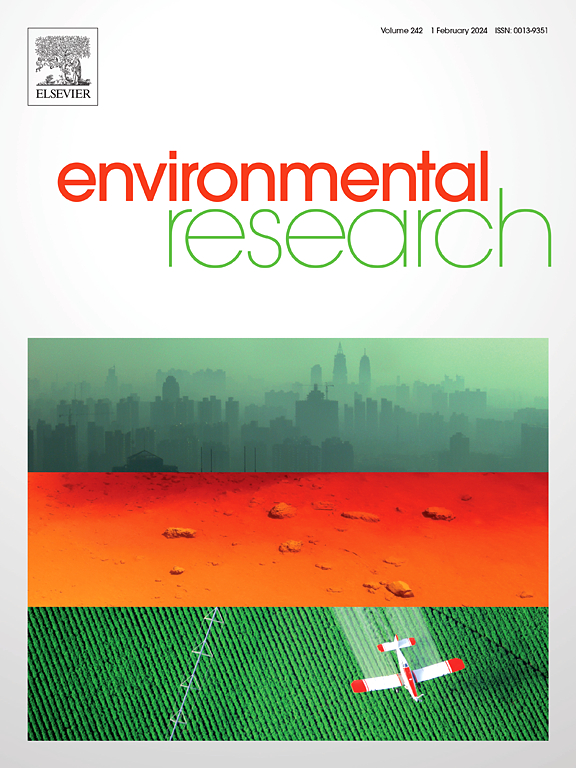目前使用的农药和个人护理用品在海水中高密度聚乙烯微塑料的吸附和消散
IF 7.7
2区 环境科学与生态学
Q1 ENVIRONMENTAL SCIENCES
引用次数: 0
摘要
研究了三种常用农药(CUPs:甲基毒死蜱- m-CPF -、二甲甲烷和丙酰胺)和三种个人护理用品(pcp:三氯生- TCS-、顿那利酯和galaxolide)在海水中高密度聚乙烯(HDPE)的吸附动力学和解吸特性。测定了所有污染物的吸附动力学平衡和质量平衡,证明了72 h后的同时耗散过程(降解,挥发等),特别是丙酰胺,对二甲甲烷,galaxolide和tonalide。然而,对于TCS和m-CPF,它们低于24%,在24 h内得到了所有考虑的分析物的稳态。随着疏水性的增加,HDPE吸附的污染物浓度分别从13.9 ng g - 1增加到35.1 ng g - 1, m-CPF和TCS。温度对m-CPF的吸附没有明显的影响,TCS在15°C时的吸附明显高于25°C,但25°C时较高的耗散会影响TCS的吸附。该研究证实了HDPE对TCS和m-CPF的解吸,在前24小时内,所有病例的解吸率均高于30%,特别是在最高测试浓度(200 ng L−1)时。在比表面积最高的HDPE上(估计增加了49倍),TCS和m-CPF的吸附效果最好(4-7倍)。本文章由计算机程序翻译,如有差异,请以英文原文为准。
Sorption and dissipation of current-use pesticides and personal-care products on high-density polyethylene microplastics in seawater
Sorption kinetics and the desorption of three current-use pesticides (CUPs: methyl-chlorpyrifos - m-CPF -, pendimethalin and propyzamide) and three personal-care products (PCPs: triclosan - TCS-, tonalide and galaxolide) on high-density polyethylene (HDPE) in seawater were characterised in this study. Sorption kinetic equilibrium and mass balance were determined for all contaminants, evidencing simultaneous dissipation processes (degradation, volatilization, etc.) after 72 h, particularly for propyzamide, pendimethalin, galaxolide and tonalide. However, they were lower than 24 % for TCS and m-CPF, getting the steady-state for all considered analytes in 24 h. The concentration of contaminants sorbed on HDPE increased with the hydrophobicity from 13.9 ng g−1 to 35.1 ng g−1 for m-CPF and TCS, respectively. No clear effect of temperature was observed for m-CPF sorption, and apparently the sorption of TCS was higher at 15 °C than at 25 °C, but it can be affected by the higher dissipation at 25 °C for this compound. This study confirmed the desorption of TCS and m-CPF from HDPE, being higher than 30 % in all cases during the first 24 h, especially for the highest tested concentrations (200 ng L−1). Sorption of TCS and m-CPF were favoured (4–7 times) on HDPE with the highest specific surface (estimated in an increase of 49-fold times).
求助全文
通过发布文献求助,成功后即可免费获取论文全文。
去求助
来源期刊

Environmental Research
环境科学-公共卫生、环境卫生与职业卫生
CiteScore
12.60
自引率
8.40%
发文量
2480
审稿时长
4.7 months
期刊介绍:
The Environmental Research journal presents a broad range of interdisciplinary research, focused on addressing worldwide environmental concerns and featuring innovative findings. Our publication strives to explore relevant anthropogenic issues across various environmental sectors, showcasing practical applications in real-life settings.
 求助内容:
求助内容: 应助结果提醒方式:
应助结果提醒方式:


